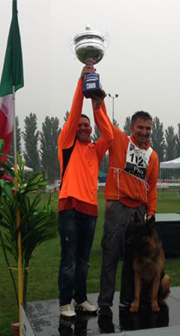The History of the German Shepherd
The German Shepherd was born a hundred years ago! Born in the sense that the schematisation of the morphological characteristics became "standard".
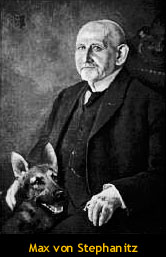
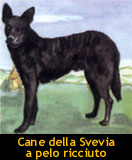
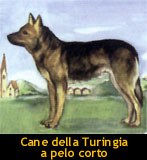
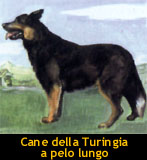
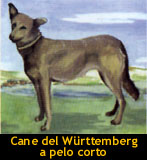
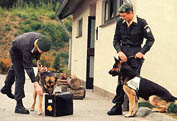
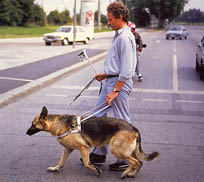
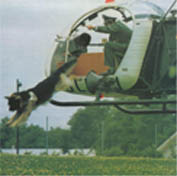
This schematisation was done by Major Max E. E. Stephanitz. After such "schematisation", which we’ll call from now on standard, the German Shepherd continued on to the road of genetic improvement that brought into our era the species that mirrored those characteristics that were determined in the standard.
But this doesn’t mean that since then the German Shepherd has not mutated, rather, we have to say that the German Shepherd has changed a lot but its nature and the fundamental rules fixed by our dear friend Max have remained unchanged as a valid point of reference for the breeders, like a lighthouse in the tempestuous sea of the years.
In Germany around 1880 different sheepdog breeds lived, despite not being purebred, they had assumed some definite characteristics.
Such characteristics were induced by a spontaneous artificial selection due to the difficulty in the displacements, which obviously put the shepherds in the condition of breeding by taking advantage of the most easily available material.
The principal breeds were the sheepdogs of Svevia, Turingia and Wuttemberg. The Svevia dogs had dark and curly coat with light bone structure but a shorthaired variety also existed.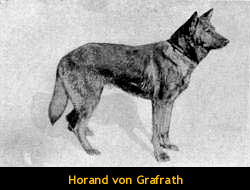
The Svevia dogs had dark and curly coat with light bone structure but a shorthaired variety also existed. The Turingia dogs were small and strong, tawny-grey usually with straight ears, of which existed a variety with short hair and another with long hair. The Wuttemberg dogs were large and less dynamic with drooping ears and had a good tail posture. There existed a variety with short hair and another with long hair. Beginning 1900 the progress stemming from technological innovations brought with it the desire to produce a sheepdog that could adapt more easily to the new way of living, that is, a dog that is less rough and heavy and also aesthetically pleasing to look at. The popular imagination pointed to an ideal dog with a semi-long coat, straight ears, long tail carried in line with the hip and not rolled up or with anti-esthetical deviations. Many breeders worked towards this direction and obtained some dogs which at that period were able to satisfy the aforementioned esthetical necessities. The German Shepherd model that we have today is that of a dog which, besides presenting itself with determined morphological characteristics, has to maintain unchanged its own temperament as a working dog and it is because of this that today we see it as a untiring worker in airports, train stations, customs check on borders, in avalanche cases, among rubbles, following the trail of lost persons or criminals risking its own life for its master or for a poor victim. How many times have we seen a German Shepherd with a white breastband and two red crosses on the side suppress its own emotions in order to pursues its work?
The German Shepherd is all of this. Today our job as breeders must have as objective that of preserving and improving (if possible) the characteristics of this spectacular breed always continuing the job undertaken by our dear friend, Max one hundred years ago! Besides determining the standard of the breed, Max Von Stephanitz founded the SV (Schaferhund Verein) on 22 April 1899 which is an organisation for the development, growth, training of the German Shepherd. The founding members were 13, which soon became 1,215 seven years later, and today has reached more than 100,000. These members came from very diverse levels of the society, from noblemen to shepherds, all united by the common passion for a national breed which at that time existed only in their dreams. With the SV founded, they began redirecting a rudimental book on the origins of the dogs in which all births were noted down, that is, births by dogs that merited to be registered because they represented in every sense the standard of the breed. The family tree of the new organisation, that is, the SV, registered Horand Von Grafath as the first dog, born 1 January 1895, from the litter of Kastor and Lane . The birth of Horand filled Max Von Stephanitz with enthusiasm who apart from appreciating its morphological qualities, appreciated and valued its wonderful character that is docile, vibrant, attentive, faithful, sure and at the same time a vigilant defender of its own master. And so the newly formed breed began to have points of reference both concretely and idealistically. It must be noted that in nearby France they were also working for the selection of a dog having these characteristics but it is without shadow of a doubt that the in Germany the most strict and rigorous controls set up by the president Von Stephanitz brought higher zootechnical value. In 1907 a monthly newsletter began publication which informed its members of the progresses made, of the shows and of the contests. A factor that should never be neglected, according to Stephanitz, was the character of the dogs, so much so that he imposed tests for young pups that measured their temper and temperament. The character factor had to follow the morphological evolution step by step. The German Shepherd that Von Stephanitz wanted was medium-sized dog, robust and in harmony with a height between 60 to 65 cm. With strong bone structure and powerful muscles, an untiring walker that is able to cover at normal gait 40-50 km. a day. It is interesting to observe that head had to be expressive and important, but not heavy since it would tire the dog easily for journeys and without shadow of a doubt a head that is too heavy would generate an impressive bite that would have damaged the sheep. The teeth had to be strong and robust and the bites performed delicately on the fleece of the sheep -only for those who need to be disciplined- must not damage the fleece, the reason for which the teeth must not be formed like pincers but rather like scissors. The best dogs already had erect ears in order to catch every noise. There is a reason, in fact, for the German Shepherd being born as a sheepdog so as to perform that tiring work of extreme and careful vigilance that included as well the herding of the sheep from morning to evening under the gaze of the shepherd. In the life of a German Shepherd, it must be observed that the constant devotion it has towards its master, following the master everywhere and awaiting his/her return anxiously, is of fundamental importance in training the dog for the most diverse tasks.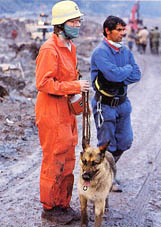


nly a great love for man can bring such complex versatility in the training. The darkest period for the breed, without doubt, was during the First World War in which the best German Shepherds were used, sacrificing them and so causing a serious zootechnical impoverishment. At war the dogs were used to send messages, transport ammunitions, aid and find the wounded. When the war ceased, the breed had to be reconstructed fighting against the hardships of food scarcity as well as the impoverishment in the breeding of dogs with strong characters that were all used up during the war. It was then indispensable because of this (in order to have new guarantees of strong character) to proclaim Sieger in 1920, Erich von Grafenwerth, a dog that brilliantly passed the working tests. Such a decision, taken in part by the SV, came from the fact that in order to continue developing the breed, the morphological profile must necessarily be valued but the character side must not be neglected.
The principal breeds were the sheepdogs of Svevia, Turingia and Wuttemberg. The Svevia dogs had dark and curly coat with light bone structure but a shorthaired variety also existed.

The Svevia dogs had dark and curly coat with light bone structure but a shorthaired variety also existed. The Turingia dogs were small and strong, tawny-grey usually with straight ears, of which existed a variety with short hair and another with long hair. The Wuttemberg dogs were large and less dynamic with drooping ears and had a good tail posture. There existed a variety with short hair and another with long hair. Beginning 1900 the progress stemming from technological innovations brought with it the desire to produce a sheepdog that could adapt more easily to the new way of living, that is, a dog that is less rough and heavy and also aesthetically pleasing to look at. The popular imagination pointed to an ideal dog with a semi-long coat, straight ears, long tail carried in line with the hip and not rolled up or with anti-esthetical deviations. Many breeders worked towards this direction and obtained some dogs which at that period were able to satisfy the aforementioned esthetical necessities. The German Shepherd model that we have today is that of a dog which, besides presenting itself with determined morphological characteristics, has to maintain unchanged its own temperament as a working dog and it is because of this that today we see it as a untiring worker in airports, train stations, customs check on borders, in avalanche cases, among rubbles, following the trail of lost persons or criminals risking its own life for its master or for a poor victim. How many times have we seen a German Shepherd with a white breastband and two red crosses on the side suppress its own emotions in order to pursues its work?
The German Shepherd is all of this. Today our job as breeders must have as objective that of preserving and improving (if possible) the characteristics of this spectacular breed always continuing the job undertaken by our dear friend, Max one hundred years ago! Besides determining the standard of the breed, Max Von Stephanitz founded the SV (Schaferhund Verein) on 22 April 1899 which is an organisation for the development, growth, training of the German Shepherd. The founding members were 13, which soon became 1,215 seven years later, and today has reached more than 100,000. These members came from very diverse levels of the society, from noblemen to shepherds, all united by the common passion for a national breed which at that time existed only in their dreams. With the SV founded, they began redirecting a rudimental book on the origins of the dogs in which all births were noted down, that is, births by dogs that merited to be registered because they represented in every sense the standard of the breed. The family tree of the new organisation, that is, the SV, registered Horand Von Grafath as the first dog, born 1 January 1895, from the litter of Kastor and Lane . The birth of Horand filled Max Von Stephanitz with enthusiasm who apart from appreciating its morphological qualities, appreciated and valued its wonderful character that is docile, vibrant, attentive, faithful, sure and at the same time a vigilant defender of its own master. And so the newly formed breed began to have points of reference both concretely and idealistically. It must be noted that in nearby France they were also working for the selection of a dog having these characteristics but it is without shadow of a doubt that the in Germany the most strict and rigorous controls set up by the president Von Stephanitz brought higher zootechnical value. In 1907 a monthly newsletter began publication which informed its members of the progresses made, of the shows and of the contests. A factor that should never be neglected, according to Stephanitz, was the character of the dogs, so much so that he imposed tests for young pups that measured their temper and temperament. The character factor had to follow the morphological evolution step by step. The German Shepherd that Von Stephanitz wanted was medium-sized dog, robust and in harmony with a height between 60 to 65 cm. With strong bone structure and powerful muscles, an untiring walker that is able to cover at normal gait 40-50 km. a day. It is interesting to observe that head had to be expressive and important, but not heavy since it would tire the dog easily for journeys and without shadow of a doubt a head that is too heavy would generate an impressive bite that would have damaged the sheep. The teeth had to be strong and robust and the bites performed delicately on the fleece of the sheep -only for those who need to be disciplined- must not damage the fleece, the reason for which the teeth must not be formed like pincers but rather like scissors. The best dogs already had erect ears in order to catch every noise. There is a reason, in fact, for the German Shepherd being born as a sheepdog so as to perform that tiring work of extreme and careful vigilance that included as well the herding of the sheep from morning to evening under the gaze of the shepherd. In the life of a German Shepherd, it must be observed that the constant devotion it has towards its master, following the master everywhere and awaiting his/her return anxiously, is of fundamental importance in training the dog for the most diverse tasks.



nly a great love for man can bring such complex versatility in the training. The darkest period for the breed, without doubt, was during the First World War in which the best German Shepherds were used, sacrificing them and so causing a serious zootechnical impoverishment. At war the dogs were used to send messages, transport ammunitions, aid and find the wounded. When the war ceased, the breed had to be reconstructed fighting against the hardships of food scarcity as well as the impoverishment in the breeding of dogs with strong characters that were all used up during the war. It was then indispensable because of this (in order to have new guarantees of strong character) to proclaim Sieger in 1920, Erich von Grafenwerth, a dog that brilliantly passed the working tests. Such a decision, taken in part by the SV, came from the fact that in order to continue developing the breed, the morphological profile must necessarily be valued but the character side must not be neglected.
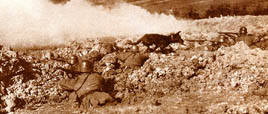

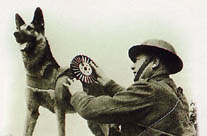
It is for this reason that even today morphologically appreciable dogs must (in order to receive the most prestigious titles) undergo difficult working tests that guarantee character stability. The so-called working tests are generally called SCH or IPO, the first measures attitude towards work and the second the level of training, both are subdivided in three parts SCH1 –SCH2 - SCH3 - and IPO1 - IPO2 - IPO3 - . Today a German Shepherd must, as a rule, have a basic preparation constituted by at least one title, namely the first -SCH1- and a so-called proof of "resistance" that consists of making the dog run 20 Km. beside its own master on a bicycle after which it can continue with a proof of morphological and character Selection (to confirm the first title) . It must be noted that some titles may not be pursued without having demonstrated both esthetical and character qualities. We will specifically talk about these tests in a separate paragraph since it is a complex topic.

Today the most famous German Shepherd is undoubtedly Commissioner Rex, turned into a celebrity by a noted and lucky television series. The television series has two very beautiful dogs of German birth and American training as protagonists (two were needed because one was not enough during the shooting of the first series). These two tv stars, in every sense, display an admirable structure, but above all, intelligent and lively eyes, which without doubt have contributed in creating the same admiration for the breed that only tv giants like Rin-tin-tin and White Fang had impressed upon the public. The major positive effect that Rex’s television success has had is that of keeping alive in the audience that image of a dog that loves man and so is always ready to risk its life for its master. Aside from the unfortunate periods for the German Shepherd - that is, the war and the serious losses in zootechnical terms - there were also periods of great propulsion in improving the breed. One of the most important periods in the history of the German Shepherd was when Hermann and Walter Martin, two very different brothers but united by a common passion for the breed, were selected as judges in the SV (the German organisation of German Shepherd lovers). They were two great artists, and in fact, every respectable artist has an ideal in mind as a point of reference, and despite experimenting with various digressions, remains substantially bound to that ideal. Both brothers had his own easily recognisable style, to a point that an expert could tell without shadow of a doubt if a dog was of "Arminius" or of "Wienerau" (respectively, names of the kennels of Hermann and Walter ).
Hermann e Walter Martin
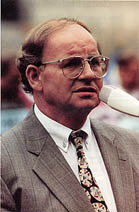

Their creations, or better said, their masterworks were undoubtedly beautiful despite being such different types. Walter had as an ideal a large, robust, elongated dog full of substance and giving a definite impression of masculinity or femininity, according to its sex, which had a small ball in the front structure (indispensable to a quadruped in order to guarantee good movement). Walter never allowed himself to be influenced by the transitory and deviating fads. In 1992 he had the satisfaction of being awarded as best breeder, observing that in his kennel he could boast of a Sieger (Zamb Wienerau) and two Siegerin (Vanta and Nathalie Wienerau ) .
ZAMB WIENERAU
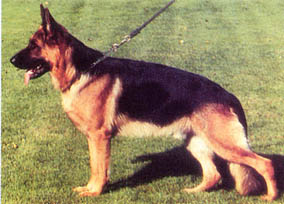
VANTA WIENERAU

Hermann followed in the shade of his brother with whom he collaborated at the start of his career, becoming judge in 1966 and separating himself in 1972 with the name "Von Arminius". The first important dog Hermann had was in 1978 with Canto Arminius who was awarded with the title of Sieger. The ideal of Hermann, always profoundly different from that of his brother, foresaw an elegant dog with a softer profile and more accentuated angles. In the creations of Hermann, the elegance and class usually dominated over strength and substance but certainly guaranteed that scenographical effect. With the example made by these due very particular brothers it can be observed that the field of breeders is a field in which every person can always and in every way express his own artistic hand while remaining within the confines of the standard.
HERE ARE TWO EXAMPLES OF THEIR DIFFERENT STYLES:


NATHALIE WIENERAU E KARLY ARMINIUS


ESKO WIENERAU E VISUM ARMINIUS
VIDEO

Il nostro allevamento
Yasabel V 17 SV 2018 prova di difesa
THomas VA SAS e V 29 SV 2018 prova di difesa
LEON Esecizi di difesa campionato Italiano SAS 2017
LEON giro veloce campionato Italiano SAS 2017
THOMAS 15 mesi preparazione all’IPO inverno 2016
THOMAS giro d’onore campionato SV 2017, SG 26 JHKL
THOMAS giro veloce campionato Italiano SAS 2017
Danko AUSLESE SAS 2013 prova di difesa
Danko Auslese SAS 2013 giro veloce
DAnko V 32 SV 2013 prova di difesa
Danko V 32 SV 2013 prova da fermo
Rania AUSLESE SAS 2013 prova di difesa
Rania AUSLESE SAS 2013 giro d'onore
Noasy di Casa Beggaito
Carlotta di casa Beggiato
Yakira di casa Beggiato
Sammo di casa Beggiato
Amira di val del Lambro
Gaia di casa Beggiato
Fanny di Val del Lambro
Titti di Val del Lambro
Orly di Casa Beggiato
Esercizi di obbedienza
Esercizi di difesa
Esercizi di pista
NEWS
PRESS
ACCESS
Visitators: 3637398





